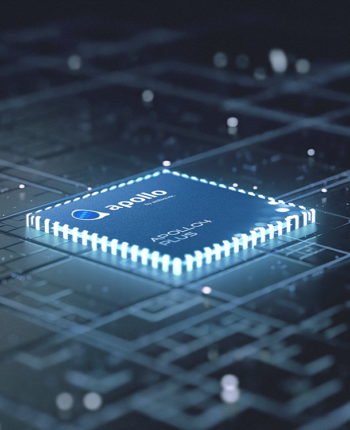The 5-Second Trick For Ambiq apollo 3
The 5-Second Trick For Ambiq apollo 3
Blog Article

This genuine-time model analyzes the signal from just one-guide ECG sensor to classify beats and detect irregular heartbeats ('AFIB arrhythmia'). The model is intended in order to detect other kinds of anomalies which include atrial flutter, and will be continually prolonged and enhanced.
8MB of SRAM, the Apollo4 has a lot more than adequate compute and storage to handle advanced algorithms and neural networks although exhibiting vibrant, crystal-clear, and smooth graphics. If more memory is needed, external memory is supported through Ambiq’s multi-little bit SPI and eMMC interfaces.
This serious-time model analyses accelerometer and gyroscopic facts to recognize anyone's motion and classify it into a several types of action like 'going for walks', 'managing', 'climbing stairs', and many others.
In addition, the included models are trainined using a considerable assortment datasets- using a subset of Organic alerts which might be captured from a single physique spot such as head, upper body, or wrist/hand. The goal is to empower models which might be deployed in genuine-entire world industrial and purchaser applications that are viable for extended-time period use.
We show some example 32x32 impression samples from the model while in the image under, on the ideal. On the remaining are earlier samples from the DRAW model for comparison (vanilla VAE samples would look even even worse plus more blurry).
The next-technology Apollo pairs vector acceleration with unmatched power effectiveness to help most AI inferencing on-product without a devoted NPU
much more Prompt: Aerial look at of Santorini in the course of the blue hour, showcasing the spectacular architecture of white Cycladic properties with blue domes. The caldera sights are amazing, plus the lighting creates a wonderful, serene ambiance.
Prompt: A white and orange tabby cat is found happily darting through a dense backyard, as though chasing some thing. Its eyes are extensive and content as it jogs forward, scanning the branches, flowers, and leaves because it walks. The path is narrow mainly because it can make its way in between all of the vegetation.
Both of these networks are therefore locked within a struggle: the discriminator is attempting to differentiate true pictures from fake visuals along with the generator is attempting to develop photographs which make the discriminator think These are serious. Ultimately, the generator network is outputting illustrations or photos which can be indistinguishable from genuine photographs to the discriminator.
The trick would be that the neural networks we use as generative models have a number of parameters substantially lesser than the quantity of info we practice them on, Therefore the models are pressured to find and efficiently internalize the essence of the info as a way to produce it.
network (normally a normal convolutional neural network) that attempts to classify if an input impression is true or created. As an example, we could feed the 200 created illustrations or photos and two hundred actual images in the discriminator and educate it as a normal classifier to distinguish in between the two sources. But Besides that—and in this article’s the trick—we can also backpropagate through both equally the discriminator as well as generator to locate how we should alter the generator’s parameters to make its 200 samples a little extra confusing for your discriminator.
You signed in with another tab or window. Reload to refresh your session. You signed out in A different tab or window. Reload to refresh your session. You switched accounts on A further tab or window. Reload to refresh your session.
When optimizing, it is useful to 'mark' locations of interest in your Vitality monitor captures. One way to do This is often using GPIO to point for the energy observe what region the code is executing in.
This one particular has a couple of hidden complexities really worth Discovering. Usually, the parameters of Embedded AI this attribute extractor are dictated because of the model.
Accelerating the Development of Optimized AI Features with Ambiq’s neuralSPOT
Ambiq’s neuralSPOT® is an open-source AI developer-focused SDK designed for our latest Apollo4 Plus system-on-chip (SoC) family. neuralSPOT provides an on-ramp to the rapid development of AI features for our customers’ AI applications and products. Included with neuralSPOT are Ambiq-optimized libraries, tools, and examples to help jumpstart AI-focused applications.
UNDERSTANDING NEURALSPOT VIA THE BASIC TENSORFLOW EXAMPLE
Often, the best way to ramp up on a new software library is through a comprehensive example – this is why neuralSPOt includes basic_tf_stub, an illustrative example that leverages many of neuralSPOT’s features.
In this article, we walk through the example block-by-block, using it as a guide to building AI features using neuralSPOT.
Ambiq's Vice President of Artificial Intelligence, Carlos Morales, went on CNBC Street Signs Asia to discuss the power consumption of AI and trends in endpoint devices.
Since 2010, Ambiq has been a leader in ultra-low power semiconductors that enable endpoint devices with more data-driven and AI-capable features while dropping the energy requirements up to 10X lower. They do this with the patented Subthreshold Power Optimized Technology (SPOT ®) platform.
Computer inferencing is complex, and for endpoint AI to become practical, these devices have to drop from megawatts of power to microwatts. This is where Ambiq has the power to change industries such as healthcare, agriculture, and Industrial IoT.
Ambiq Designs Low-Power for Next Gen Endpoint Devices
Ambiq’s VP of Architecture and Product Planning, Dan Cermak, joins the ipXchange team at CES to discuss how manufacturers can improve their products with ultra-low power. As technology becomes more sophisticated, energy consumption continues to grow. Here Dan outlines how Ambiq stays ahead of the curve by planning for energy requirements 5 years in advance.
Ambiq’s VP of Architecture and Product Planning at Embedded World 2024
Ambiq specializes in ultra-low-power SoC's designed to make intelligent battery-powered endpoint solutions a reality. These days, just about every endpoint device incorporates AI features, including anomaly detection, speech-driven user interfaces, audio event detection and classification, and health monitoring.
Ambiq's ultra low power, high-performance platforms are ideal for implementing this class of AI features, and we at Ambiq are dedicated to making implementation as easy as possible by offering open-source developer-centric toolkits, software libraries, and reference models to accelerate AI feature development.

NEURALSPOT - BECAUSE AI IS HARD ENOUGH
neuralSPOT is an AI developer-focused SDK in the true sense of the word: it includes everything you need to get your AI model onto Ambiq’s platform. You’ll find libraries for talking to sensors, managing SoC peripherals, and controlling power and memory configurations, along with tools for easily debugging your model from your laptop or PC, and examples that tie it all together.
Facebook | Linkedin | Twitter | YouTube Report this page